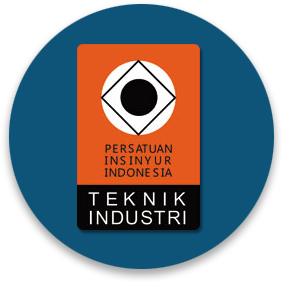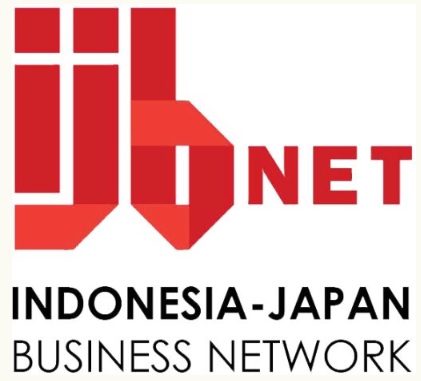Memperbaiki Kinerja Mutu dengan Menggunakan Metode FMEA pada Industri Karung Tenun Polypropylene
Abstract
The quality failure rate in the production process in the form of defective products, scrap products, rework, rejection, and waste is an indicator of a company's quality performance, especially with regard to cost quality. Failure in the production process will increase the rate of defects, scrap, rework, rejection, and waste, which in turn will increase the cost of quality. This study uses the FMEA method to fight identified failures from gemba walk activities. Improvements made using the FMEA method with several recommendations for improvement solutions can reduce failures, this can be seen by comparing the RPN values. The RPN failure value in the extrusion process which affected the hollow or loose PP woven sacks decreased to 98 from 490, and which resulted in lighter sack weight decreased to 98 from 490. The decrease occurred due to the achievement of the process capability value (Cpk) which was as expected ie 1.36 for denier specifications and 1.33 for yarn bandwidth specifications. This Cpk achievement has an impact on a decrease of the occurrence (o) level. Meanwhile, the failure of the RPN value in the weaving process which had an impact on products returned by customers, decreased to 98 from 490. The decrease occurred because the weaving process operator was given the responsibility to carry out maintenance and cleanliness of the machine which resulted in a decrease of the occurrence (o) level.
Keywords
Full Text:
PDFReferences
Altuntas, S., & Kansu, S. (2019). An innovative and integrated approach based on SERVQUAL, QFD and FMEA for service quality improvement: A case study. Kybernetes, 49(10), 2419–2453. https://doi.org/10.1108/K-04-2019-0269
Arabsheybani, A., Paydar, M. M., & Safaei, A. S. (2018). An integrated fuzzy MOORA method and FMEA technique for sustainable supplier selection considering quantity discounts and supplier’s risk. Journal of Cleaner Production, 190, 577–591. https://doi.org/10.1016/j.jclepro.2018.04.167
Carvalho, A. V., Enrique, D. V., Chouchene, A., & Charrua-Santos, F. (2021). Quality 4.0: An overview. Procedia Computer Science, 181(2019), 341–346. https://doi.org/10.1016/j.procs.2021.01.176
Dalton, J. (2019). Gemba Kaizen. In Great Big Agile: An OS for Agile Leaders (pp. 175–176). https://doi.org/10.1007/978-1-4842-4206-3
Fatah, K. M. A. (2022). Menghilangkan Keluhan Pelanggan Dengan Menggunakan Teknik Poka-Yoke Sederhana Berbiaya Murah. J@ti Undip: Jurnal Teknik Industri, 17(3), 168–173. https://doi.org/10.14710/jati.17.3.168-173
Fattahi, R., & Khalilzadeh, M. (2018). Risk evaluation using a novel hybrid method based on FMEA, extended MULTIMOORA, and AHP methods under fuzzy environment. Safety Science, 102(July 2017), 290–300. https://doi.org/10.1016/j.ssci.2017.10.018
Godina, R., Silva, B. G. R., & Espadinha-Cruz, P. (2021). A DMAIC integrated fuzzy fmea model: A case study in the automotive industry. Applied Sciences (Switzerland), 11(8). https://doi.org/10.3390/app11083726
Kumar, P., Maiti, J., & Gunasekaran, A. (2018). Impact of quality management systems on firm performance. International Journal of Quality and Reliability Management, 35(5), 1034–1059. https://doi.org/10.1108/IJQRM-02-2017-0030
Lo, H. W., & Liou, J. J. H. (2018). A novel multiple-criteria decision-making-based FMEA model for risk assessment. Applied Soft Computing Journal, 73, 684–696. https://doi.org/10.1016/j.asoc.2018.09.020
Maryani, E., Purwanto, A., Kartika, H., Haris, M., Ihsan, N., Fatah, K. M. A., & Pramono, R. (2020). Do gemba kaizen and 5s reinforce medical equipment manufacturing performance ? 07(07), 41–57.
Mete, S. (2019). Assessing occupational risks in pipeline construction using FMEA-based AHP-MOORA integrated approach under Pythagorean fuzzy environment. Human and Ecological Risk Assessment, 25(7), 1645–1660. https://doi.org/10.1080/10807039.2018.1546115
Özilgen, S., & Özilgen, M. (2017). General template for the FMEA applications in primary food processing. Advances in Biochemical Engineering/Biotechnology, 161, 29–69. https://doi.org/10.1007/10_2016_52
Peeters, J. F. W., Basten, R. J. I., & Tinga, T. (2018). Improving failure analysis efficiency by combining FTA and FMEA in a recursive manner. Reliability Engineering and System Safety, 172(November 2017), 36–44. https://doi.org/10.1016/j.ress.2017.11.024
Rana, S., & Belokar, R. M. (2017). Quality Improvement Using FMEA: A Short Review. International Research Journal of Engineering and Technology, 4(6), 263–267. https://irjet.net/archives/V4/i6/IRJET-V4I645.pdf
Spreafico, C., Russo, D., & Rizzi, C. (2017). A state-of-the-art review of FMEA/FMECA including patents. Computer Science Review, 25, 19–28. https://doi.org/10.1016/j.cosrev.2017.05.002
Sturm, S., Kaiser, G., & Hartmann, E. (2019). Long-run dynamics between cost of quality and quality performance. International Journal of Quality and Reliability Management, 36(8), 1438–1453. https://doi.org/10.1108/IJQRM-05-2018-0118
The Council Six Sigma Certification. (2018). Six Sigma A Complete Step-by-Step Guide. In The Council for Six Sigma Certification. https://www.sixsigmacouncil.org/wp-content/uploads/2018/08/Six-Sigma-A-Complete-Step-by-Step-Guide.pdf
Trafialek, J., & Kolanowski, W. (2014). Application of Failure Mode and Effect Analysis (FMEA) for audit of HACCP system. Food Control, 44, 35–44. https://doi.org/10.1016/j.foodcont.2014.03.036
DOI: http://dx.doi.org/10.22441/MBCIE.2023.028
Refbacks
- There are currently no refbacks.
Copyright (c) 2023 Proceeding Mercu Buana Conference on Industrial Engineering

This work is licensed under a Creative Commons Attribution-ShareAlike 4.0 International License.
Journal ISSN:
| e-ISSN | |
| 2988-4284 |
Tim Editorial Office
Proceeding Mercu Buana Conference on Industrial Engineering
Program Studi Magister Teknik Industri Universitas Mercu Buana
Jl. Raya Meruya Selatan No. 1 Kembangan Jakarta Barat
Email: [[email protected]]
Website: https://publikasi.mercubuana.ac.id/index.php/mbcie/
The Journal is Indexed and Journal List Title by:
in Collaboration with:








